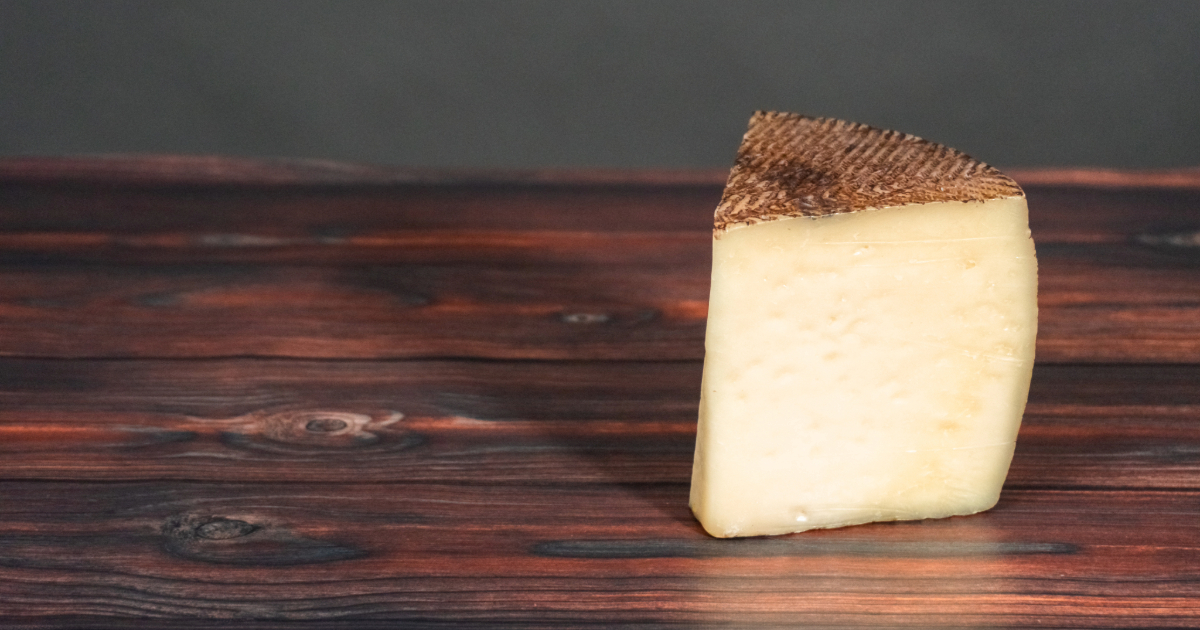Cheese is one of Spain's most iconic foods. Two of the most well-known Spanish cheeses are Iberico and Manchego.

Both originating from the La Mancha region, these cheese varieties have some similarities but also key differences.
How Iberico Cheese is Made
Iberico cheese, sometimes called Queso Iberico, is made from a blend of sheep's, goat's, and cow's milk. This combination creates its distinctive smooth, soft texture and balanced flavor profile.
To make Iberico:
- Milk from the three animals is combined together.
- Rennet is added to coagulate the milk.
- The curds are cut, releasing whey.
- The curds are pressed into molds to form wheels.
- Iberico ages for 60-120 days to develop its flavors.
The blend of milks gives Iberico notes of butter, grass, and nuts in its flavor and aroma. Its texture is supple, smooth, and creamy thanks to the cow’s milk fat.
Iberico can be young/semi-mature or aged longer for a sharper bite. It has an edible rind that is golden yellow to brown.
The Making of Manchego Cheese
Manchego cheese is made purely from sheep's milk - specifically, from the Manchega sheep breed native to La Mancha.
Manchego is created via a similar process but has a firmer, crumblier texture:
- Milk from Manchega sheep is curdled with rennet.
- The curds are cut up and whey drained off.
- Curds are pressed into circular molds, imprinting Manchego's iconic zig-zag rind pattern.
- Brine salting helps form an inedible natural rind.
- Manchego ages 60 days up to 2 years.
Its distinctive tangy, caramelised sheep's milk flavor intensifies with longer aging. Young Manchego is milder and fruity. The cheese can range from white to ivory-yellow in color.
How Do Iberico and Manchego Taste Different?
The differing milk sources mean Iberico and Manchego have distinct flavor profiles and textures, despite sharing a region.
Iberico Cheese Taste
- Smooth, buttery, and creamy thanks to the cow’s milk
- Mild nuttiness from the sheep’s milk
- Grassy, fermented tang from the goat's milk
- Balanced, rounded flavors
- Supple, moist texture when young
- Slight piquancy when aged longer
Manchego Cheese Taste
- Potent sheep's milk tang
- Notes of caramel and nuts
- Firmer, crumblier texture
- Rich savoriness that intensifies with age
- Fruitier when young
- Peppery bite in very mature varieties
Iberico is smooth and creamy with balanced flavor, while Manchego is dense, crumbly and sharply tangy, with a pure sheepy bite.
Serving Suggestions: Enjoying Iberico and Manchego
Both Iberico and Manchego shine when served in simple Spanish-style tapas. Here are some ideas:
- Slice/cube the cheese and serve alone with crackers or crusty bread
- Pair with cured meats like chorizo, jamón serrano, or salchichón
- Serve with olives, grapes, or membrillo (quince paste)
- Shred/grate over salads, pasta, soups, omelets or potatoes
- Stuff into peppers or dates
- Bake into tarts or gratin dishes
For more lavish cheeseboards, display with honey, nuts, chutney, or fruit, plus wine or sherry.
When cooking, add Iberico to gratins, risottos and pasta for creaminess. Use crumbly Manchego in cheesy bakes.
Key Takeaway: Enjoy Iberico and Manchego simply with bread and wine, stuffed into peppers, baked into dishes, or on elaborate Spanish-themed cheeseboards.
What to Drink with These Cheeses
The salty, savory flavors of Iberico and Manchego pair deliciously with a variety of beverages:
Wine
- Red: Tempranillo, Syrah, Cabernet Sauvignon
- White: Sauvingon Blanc, lighter Chardonnay
Beer
- Wheat beer
- Pale ale
- Brown ale
Other Drinks
- Sherry - Fino or Amontillado
- Cider
- Lambrusco wine
For an authentic Spanish-style pairing, tempranillo-based Rioja and Ribera del Duero wines are perfect matches. Dry sherry also beautifully complements these cheeses.
Nutrition: Iberico vs. Manchego Calories and Fat
Both varieties provide good nutrition as part of a healthy diet. Here is how they compare:
| Nutrient | 1 oz Iberico | 1 oz Manchego |
|---|---|---|
| Calories | 104 | 102 |
| Total Fat | 8g | 8g |
| Saturated Fat | 5g | 5g |
| Protein | 7g | 7g |
So they are very close in main nutrients. Hard cheeses like these offer a good hit of protein and calcium. However, they are high in saturated fat and sodium, so enjoy in moderation.
Manchego vs. Iberico: Key Differences
| Factor | Iberico | Manchego |
|---|---|---|
| Made From | Sheep's, goat's & cow's milk | Sheep's milk only |
| Texture | Smooth, creamy | Firm, crumbly |
| Flavor | Mild, balanced | Strong, tangy |
| Rind | Edible, yellow-brown | Natural, grey-beige |
FAQs
Is Iberico or Manchego better?
There is no definitively "better" cheese - it depends on personal taste! Smooth, creamy Iberico has a more subtle, balanced flavor, while dense Manchego is boldly tangy and sheepy-tasting.
What is the difference between Manchego and Iberico cheese?
The main differences are the milk source (Manchego uses 100% sheep's milk, Iberico blends sheep's, goat's and cow's milk) and the texture/flavor (Iberico milder and creamier; Manchego drier and tangier).
Why is Manchego so expensive?
Manchego is more labor-intensive to produce than many cheeses, as it is made from sheep's milk and often aged for 6 months up to 2 years to develop its signature tangy caramelized flavor. This extra time and effort translates to a higher price.
Can you eat Manchego cheese rind?
No, Manchego has an inedible natural rind, so you should cut this off before eating the cheese. In contrast, Iberico cheese has an edible rind that contributes flavor.
Conclusion
While their origins in La Mancha unite them, Iberico and Manchego cheeses each have a unique identity.
Smooth, subtle Iberico gains nuanced flavor from its three blended milks.
Pure sheepy Manchego packs a fiery, caramelized punch that intensifies with age.

